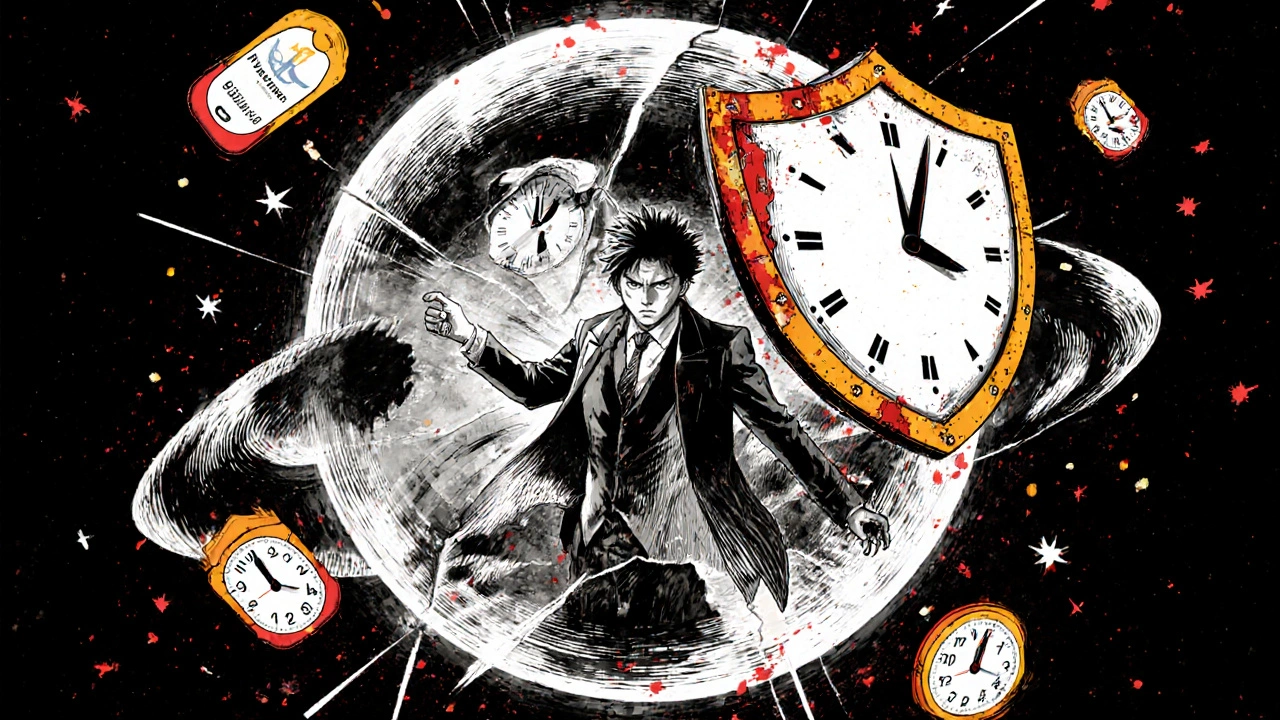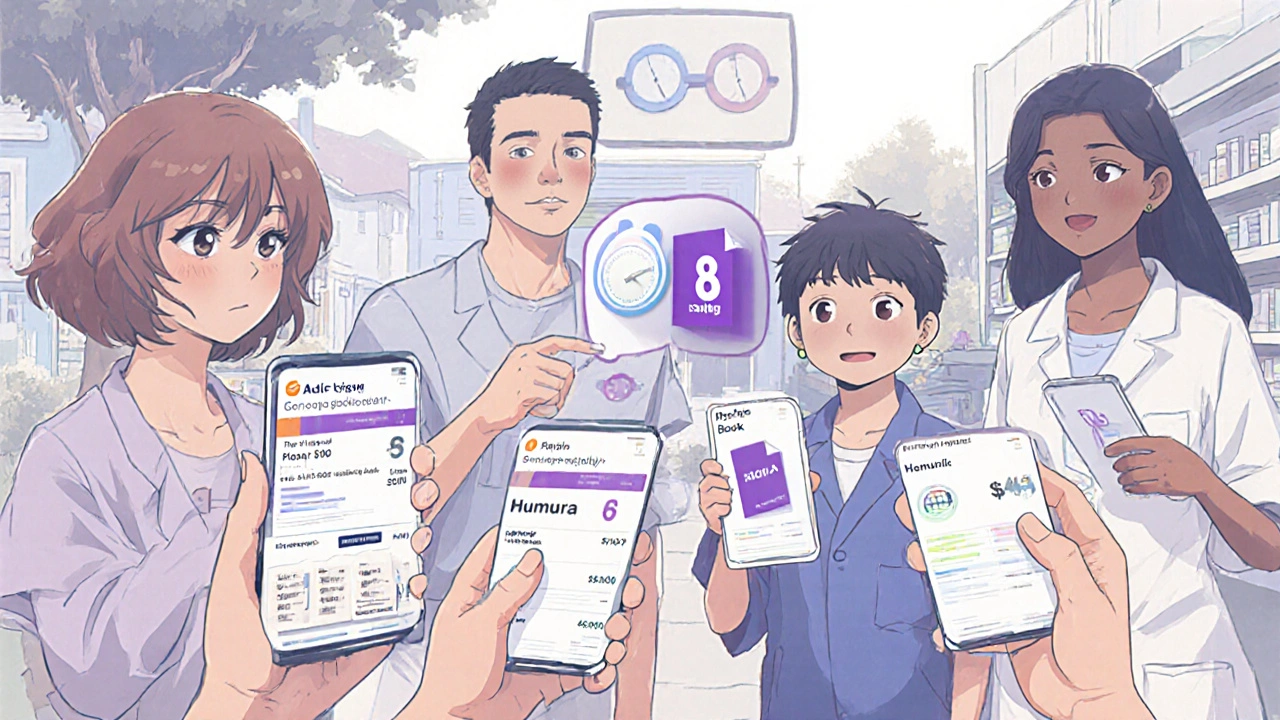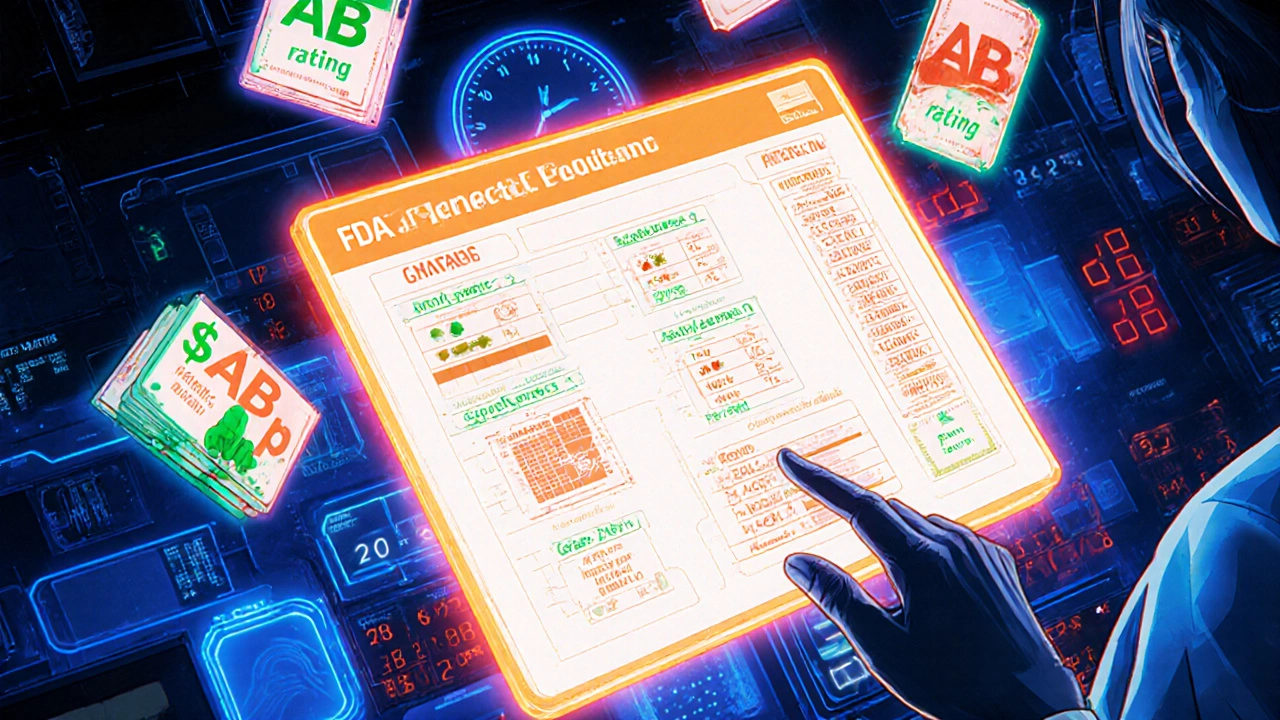The Orange Book isn’t a physical book you can buy at a pharmacy. It’s the U.S. Food and Drug Administration’s official database of all approved small-molecule drugs in the United States - and it’s one of the most important tools in the entire healthcare system. If you’ve ever wondered why a generic version of your prescription shows up on the shelf months after the brand-name drug launched, the Orange Book is why.
What the Orange Book Actually Is
Officially called Approved Drug Products With Therapeutic Equivalence Evaluations, the Orange Book has been around since 1979. But it didn’t become the powerhouse it is today until 1984, when Congress passed the Hatch-Waxman Act. That law created the legal framework that lets generic drug companies enter the market without repeating expensive clinical trials. The Orange Book is the map that guides them.It doesn’t list every drug. It only includes small-molecule drugs - the kind you swallow in pills or inject as liquids. Biologics like insulin, vaccines, or cancer treatments? Those are in the Purple Book. Compounded drugs? Not here. Unapproved drugs? Nope. The Orange Book is strict about what it covers, and that’s by design.
For each approved drug, the database lists:
- The brand name and generic name
- The dosage form (tablet, capsule, injection, etc.)
- The strength
- The route of administration (oral, topical, IV)
- The NDA or ANDA number - the official application ID from the FDA
But here’s where it gets powerful: every drug also gets a therapeutic equivalence rating. That’s the AB rating you see on pharmacy screens. If a drug has an AB rating, it means the FDA has determined it’s chemically identical to the brand-name version and can be safely swapped out. That’s what lets pharmacists substitute generics without asking a doctor.
Patents and Exclusivity: The Hidden Clocks
The Orange Book doesn’t just list drugs. It lists the patents that protect them. Every brand-name drug company must submit patent information to the FDA within 30 days of approval. That includes:- Patent numbers
- Expiration dates
- Patent use codes - which tell you what medical conditions the patent covers
For example, a drug might be approved to treat high blood pressure, but the patent only covers its use for heart failure. That’s a use code. Generic manufacturers look at these to figure out exactly when they can launch without breaking the law.
On top of patents, there’s regulatory exclusivity. This is extra protection granted by the FDA, separate from patents. It includes:
- 5 years for a new chemical entity (NCE)
- 7 years for orphan drugs (for rare diseases)
- 6 months extra if the company tested the drug in children
These exclusivity periods can delay generics even if the patent expires. That’s why the Orange Book is so detailed - it shows you both the patent clock and the exclusivity clock. And both must run out before a generic can legally enter.

How It Impacts Real People
You might think this is just for lawyers and drug companies. But it affects you every time you fill a prescription.Pharmacists check the Orange Book daily. When a doctor writes a brand-name prescription, the pharmacist looks up the drug in the database. If there’s an AB-rated generic available, they can legally substitute it - unless the doctor says "dispense as written." That’s how you save money. In 2023, 90% of all prescriptions filled in the U.S. were generics. That’s $1.68 trillion in savings since 1984.
One hospital pharmacist in Ohio told me: "I check the Orange Book before I even touch the bottle. If the brand’s patent expired last week and the generic’s already listed, I call the doctor and ask if they mind switching. Patients appreciate the savings."
For patients, this means lower out-of-pocket costs. For insurers, it means lower premiums. For the government, it means less spending on Medicare and Medicaid.
What the Orange Book Doesn’t Tell You
It’s not perfect. Critics point out that some drug companies abuse the system. They file patents on tiny changes - like a new coating on a pill or a slightly different dosage schedule - just to reset the clock. This is called "evergreening." The FDA has acknowledged the problem. In 2024, they proposed new rules requiring more specific patent details to stop this practice.Also, the Orange Book doesn’t reflect patent lawsuits in real time. If a generic company challenges a patent and wins, it can take months for the FDA to update the database. That’s why big generic manufacturers have teams monitoring the site every morning.
And again - no biologics. If you’re on Humira or Enbrel, you won’t find them here. Those are in the Purple Book, which doesn’t have the same level of patent detail. That’s why biologic generics (called biosimilars) take longer and cost more to develop.

Who Uses It and How
You don’t need a law degree to use it. The Electronic Orange Book is free and public at accessdata.fda.gov. It’s updated daily, not monthly like it used to be. You can search by drug name, active ingredient, or patent number.Here’s how different people use it:
- Pharmacists: Verify therapeutic equivalence before substituting.
- Generic drug companies: Plan product launches based on patent expirations.
- Doctors: Some check it to know which generics are approved for substitution.
- Patients: Increasingly, people search for their own drugs to see if a cheaper version is available.
In 2023, over 1.2 million people visited the site each month. That’s up from 400,000 in 2018. More people are learning that the Orange Book is their secret tool for saving money on prescriptions.
The Bigger Picture
The Orange Book is a quiet engine behind the U.S. drug market. It’s why generic drugs make up 90% of prescriptions but only 23% of drug spending. It’s why the average time from brand patent expiration to generic launch dropped from 36 months in 1990 to just 11 months in 2023.And it’s evolving. In March 2023, the FDA launched a beta API for developers to pull Orange Book data directly into apps and software. By late 2024, it’ll be fully live. That means pharmacy systems, insurance platforms, and even smartphone apps could soon auto-check for generics as you’re typing a prescription.
Experts like Dr. Josephine Wang from the National Bureau of Economic Research call it "an indispensable tool for measuring innovation in medicine." But even she admits it’s not flawless. The real challenge now is making sure the system keeps up with modern drug development - not just pills, but complex biologics, personalized medicines, and new delivery methods.
Still, for now, the Orange Book remains the clearest, most reliable source of truth in a complicated system. It’s the reason you can pay $4 for a generic statin instead of $400 for the brand. And it’s why, even in a world of high-tech medicine, the simplest solution - transparency - still works best.
Is the Orange Book only for U.S. drugs?
Yes. The Orange Book only includes drugs approved by the U.S. Food and Drug Administration for sale in the United States. Other countries have their own databases - like the UK’s Yellow Book or Canada’s Drug Product Database - but they don’t use the same therapeutic equivalence ratings or patent rules.
Can I find biologics like insulin in the Orange Book?
No. Biologics - including insulin, vaccines, monoclonal antibodies, and other complex protein-based drugs - are listed in the Purple Book, not the Orange Book. The Orange Book only covers small-molecule drugs, which are chemically synthesized and easier to replicate as generics.
What does an AB rating mean on a generic drug?
An AB rating means the FDA has determined the generic drug is therapeutically equivalent to the brand-name version. That means it has the same active ingredient, strength, dosage form, route of administration, and bioavailability. It’s safe to substitute without a doctor’s approval.
How often is the Orange Book updated?
The Electronic Orange Book is updated daily. New drug approvals, patent listings, exclusivity changes, and therapeutic equivalence updates are added every business day. This replaced the old monthly supplements in 2005, making the data much more current.
Do I need to pay to use the Orange Book?
No. The Electronic Orange Book is completely free and publicly accessible at the FDA’s website. Some third-party companies offer enhanced analytics or alerts for a fee, but the raw data - including all patents, exclusivity periods, and therapeutic ratings - is available at no cost.
Why do some generics take longer to appear after a patent expires?
Even after a patent expires, a generic may still be blocked by regulatory exclusivity - like a 5-year period for a new chemical entity or 7 years for an orphan drug. Also, if the brand company files a lawsuit challenging the generic, the FDA may delay approval for up to 30 months. The Orange Book shows these exclusivity dates, but not pending lawsuits.
Can I trust the patent dates listed in the Orange Book?
The dates are official and submitted by the brand company under penalty of law. But they’re not always accurate in practice. Some companies list patents that are weak or irrelevant to delay generics. The FDA is tightening rules to prevent this, but it’s still a loophole. For legal purposes, the listed dates are what matter - even if they’re later challenged in court.

Neoma Geoghegan
November 25, 2025 AT 06:38The Orange Book is the unsung hero of generic drug access. AB ratings = life changing for patients. No more overpaying for the same pill in a different box.
Bartholemy Tuite
November 26, 2025 AT 21:14Man i used to think generics were sketch until i learned about the orange book. FDA doesn't play. If it's AB rated, it's the same damn thing. My buddy switched from Lipitor to atorvastatin and saved $300 a month. No side effects, no drama. Just cheaper. The system works if you know where to look. 🤯
Sam Jepsen
November 27, 2025 AT 12:44As a pharmacist in Vancouver, I use the Orange Book every day. It’s wild how many people don’t know it exists. I literally show patients the site on my phone when they ask why their script is cheaper now. That AB rating? It’s the green light. And yeah, the patent games are real - but the transparency still saves billions. This isn’t just bureaucracy, it’s public health infrastructure.
Yvonne Franklin
November 28, 2025 AT 13:53AB rating means bioequivalent. Same active ingredient. Same dose. Same route. Same performance. FDA tests this rigorously. If your pharmacy gives you a generic with an AB rating, you’re getting the exact same therapeutic effect. No compromise. No guesswork. Just science and savings.
manish chaturvedi
November 30, 2025 AT 08:09India has its own drug regulatory framework, but the Orange Book model is something we should study closely. Transparency in patent listings and therapeutic equivalence is vital for affordable medicine. Even in developing nations, access to low-cost generics can transform public health outcomes. The FDA’s approach, despite flaws, sets a global benchmark.
Julie Pulvino
December 2, 2025 AT 07:18I never realized how much this affected my monthly meds until I started reading the Orange Book myself. Found out my blood pressure med had a generic available for $4. I was paying $120 before. Mind blown. Also, the fact that it's free and updated daily? That’s actual public service. Thank you, FDA.
Patrick Marsh
December 3, 2025 AT 04:58Patent listings must be accurate. FDA must enforce penalties for evergreening. The Orange Book is essential - but only if the data is trustworthy. Misleading patents delay generics. Patients suffer. This isn't a loophole. It's a failure.
Danny Nicholls
December 5, 2025 AT 04:41OMG I just checked my insulin med in the Orange Book... wait no it's not there 😭 I'm so confused now. Is that why biosimilars cost so much? 🤔 Also, the API thing sounds so cool - can we make a Chrome extension that auto-finds generics when we search for drugs? 🚀
Robin Johnson
December 6, 2025 AT 00:07The Orange Book doesn’t fix everything, but it’s the best tool we have. Generic manufacturers use it to time their launches. Pharmacists rely on it daily. Patients benefit silently. It’s not flashy, but it’s foundational. The FDA should be applauded for maintaining this. Most governments couldn’t pull this off.
Latonya Elarms-Radford
December 6, 2025 AT 22:57Let’s be real - the Orange Book is the last bastion of rationality in a pharmaceutical industry that has long abandoned ethics for profit. Every patent evergreen, every regulatory loophole, every inflated price tag is a silent scream against the soul of medicine. And yet... here it is. A dry, bureaucratic, glorified spreadsheet that somehow still stands as a monument to transparency. It’s not beautiful. It’s not poetic. But it’s the only thing keeping the system from collapsing into a black hole of corporate greed. We owe our lives to this database. And we owe the FDA our silence - because if we started screaming, they’d have to fix it. And they don’t want to.
Rahul Kanakarajan
December 7, 2025 AT 15:56This whole thing is a farce. Patent evergreening is rampant. The FDA knows it. The companies know it. The public is clueless. And now you're praising this as some kind of miracle? The Orange Book is a legal fiction. It's not truth - it's paperwork. Real innovation? That's in biologics. And the Purple Book? Even worse. This is just corporate theater dressed up as public service.